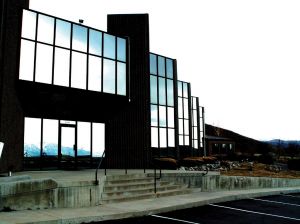In the San Diego commercial real estate market, these days it is relatively common for landlords to ask prospective tenants to enter into a standard AIR (American Industrial Real Estate) commercial lease. The AIR standard lease was drafted by the AIR Commercial Real Estate Association with the intention of balancing the interests of commercial landlords and tenants in an effort to expedite the negotiation process. While the standard lease provides a framework for landlords and tenants to work from in negotiating lease terms, it’s important that they avoid arbitrary acceptance. Every lessor/lessee relationship is different and it is important that individual landlords and tenants examine the AIR lease with an eye towards their particular circumstance. Consultation with an experienced commercial lease attorney is the best way to ensure that a business’ interests are protected. This article examines some general issues with specific attention directed to the Standard Industrial/Commercial Multi-Tenant Lease – Net:
 In general: The parties to a commercial lease should always be acutely aware of important terms and definitions such as Premises, Common Areas, Common Area Operating Expenses, Commencement Date, Parking, Use, Warranties, Rent, Maintenance, Utilities, Trade Fixtures, Alterations, Insurance, Property Taxes and Renovations. This list is not exhaustive, but it is a good representation of lease language that requires specific attention by both the lessor and lessee. The ultimate terms will depend on the tenant’s business and the layout of and landlord’s vision for the property. The standard AIR lease language is typical for commercial net leases. Landlord’s who repeatedly use the AIR lease have practical experience relying on its terms, and aren’t necessarily concerned with changing the status quo. However, finding and keeping good tenants provides a significant benefit to landlords, and working with new tenants to achieve lease terms that are practical and economically feasible for new tenants is a good long term business practice. New tenants have much to learn about the “triple net” lease and common area operating expenses. It’s important that they understand clearly what their rights and obligations will be under the new lease regardless of whether they are able to negotiate more favorable terms.
In general: The parties to a commercial lease should always be acutely aware of important terms and definitions such as Premises, Common Areas, Common Area Operating Expenses, Commencement Date, Parking, Use, Warranties, Rent, Maintenance, Utilities, Trade Fixtures, Alterations, Insurance, Property Taxes and Renovations. This list is not exhaustive, but it is a good representation of lease language that requires specific attention by both the lessor and lessee. The ultimate terms will depend on the tenant’s business and the layout of and landlord’s vision for the property. The standard AIR lease language is typical for commercial net leases. Landlord’s who repeatedly use the AIR lease have practical experience relying on its terms, and aren’t necessarily concerned with changing the status quo. However, finding and keeping good tenants provides a significant benefit to landlords, and working with new tenants to achieve lease terms that are practical and economically feasible for new tenants is a good long term business practice. New tenants have much to learn about the “triple net” lease and common area operating expenses. It’s important that they understand clearly what their rights and obligations will be under the new lease regardless of whether they are able to negotiate more favorable terms.
Paragraph 3.3 – Delay In Possession: The lessor is required to use its best commercially reasonable efforts to deliver possession of the premises by the “commencement date”, and lessees have little recourse against the landlord for delayed delivery. Under Paragraph 3.3, lessors are not liable in any way for delayed delivery. At best lessees may terminate the lease if possession isn’t delivered by the 60th day. If delivery is delayed beyond six months, the lease automatically terminates under Paragraph 3.3. Termination of the lease is an untenable option for most new tenants who have made commitments to lenders, contractors, suppliers, franchisors and/or customers. As such, lessees are at the mercy of the lessors’ “commercially reasonable efforts” without legal recourse for the damages delayed delivery cause. This does not mean that landlords are out looking to take advantage of new tenants. However, tenants should ask their attorneys to try and negotiate better terms with respect to delayed possession to increase the landlord’s incentive to be diligent and efficient, including a provision for damages for delayed possession.
Continued in Part Two.
 San Diego Business Lawyer Blog
San Diego Business Lawyer Blog

